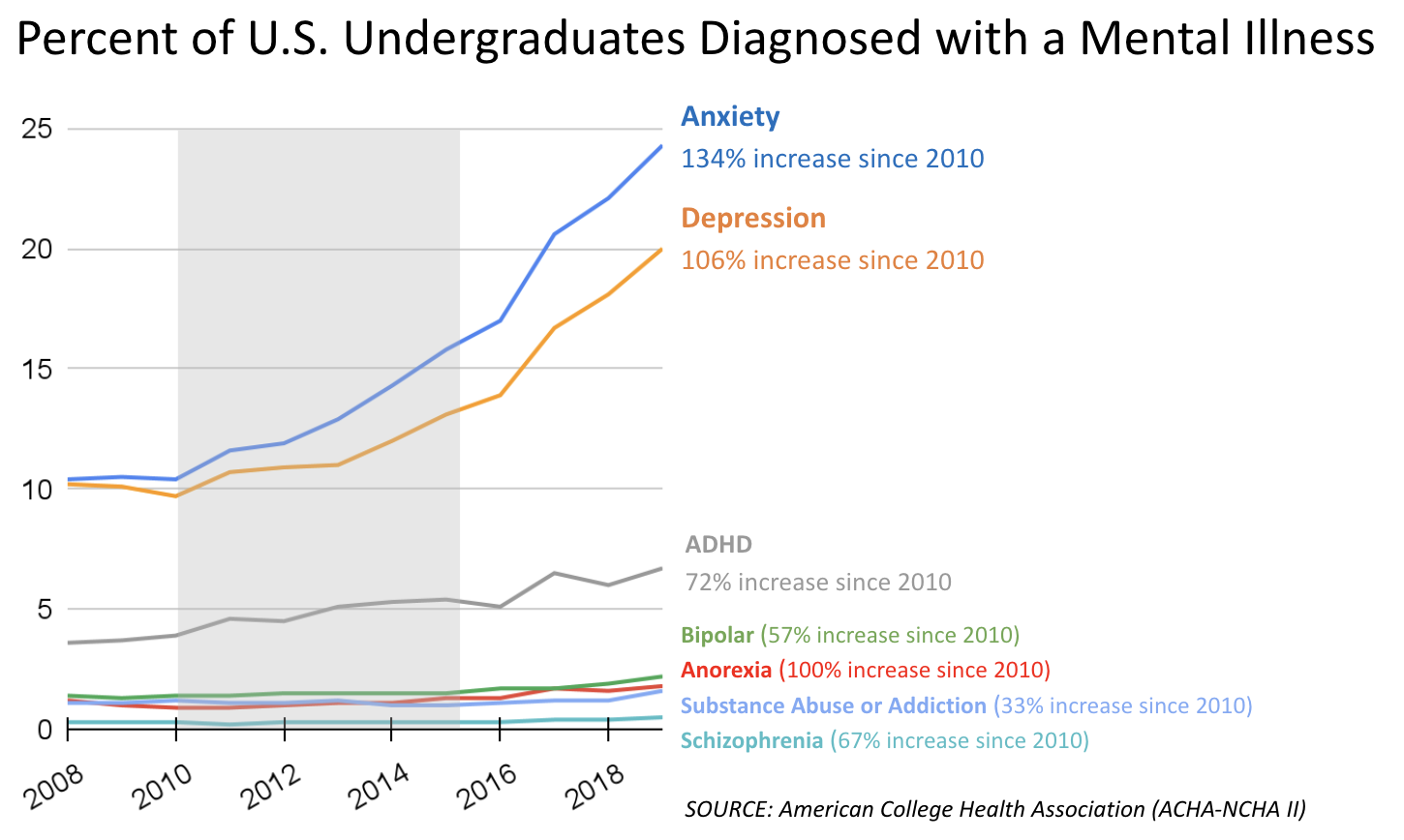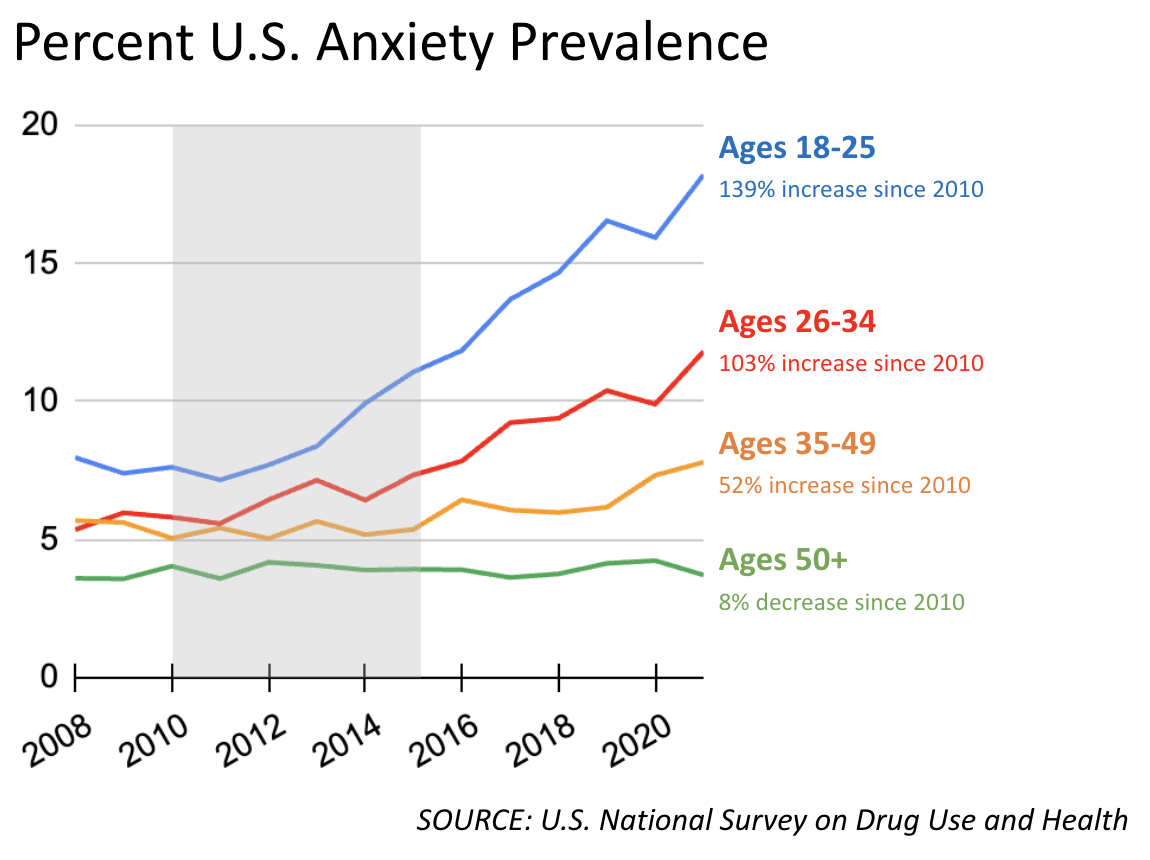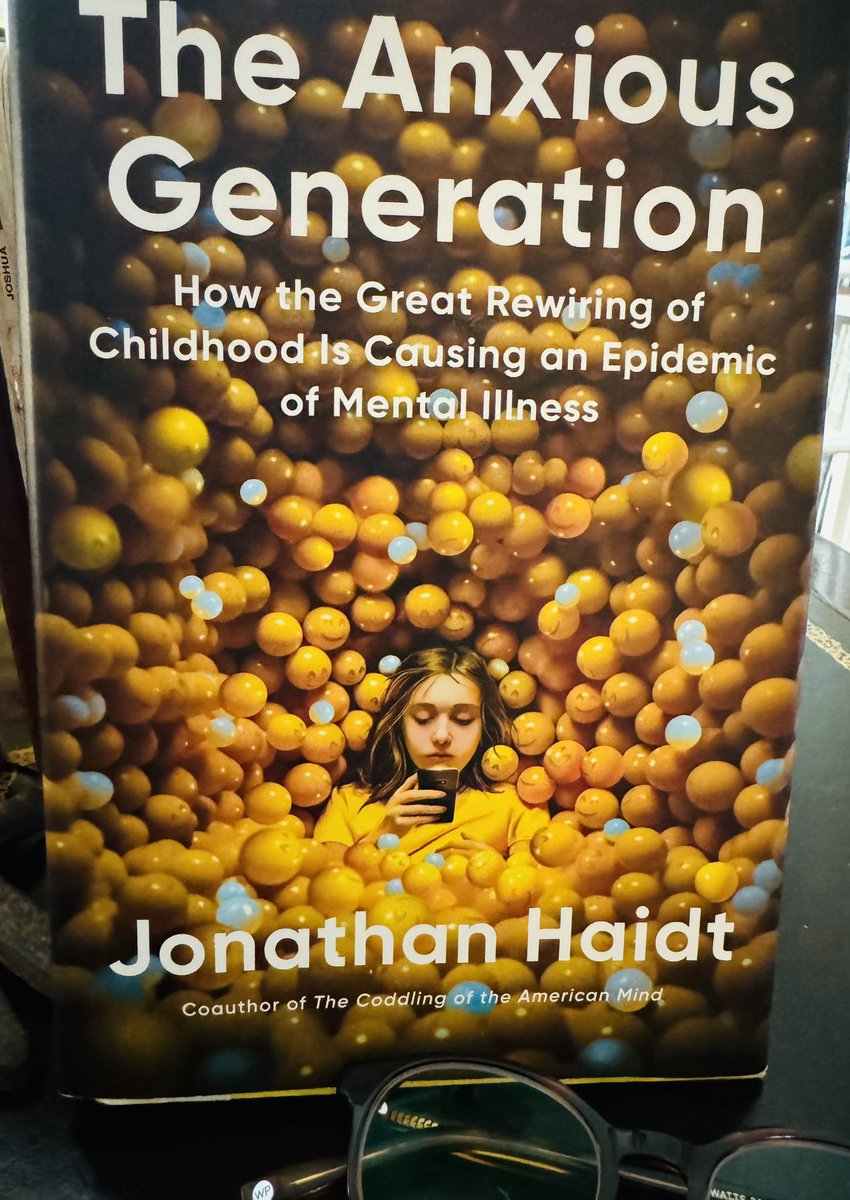Anxious Gen @JonHaidt how smartphones/social media rewired childhood.All parents & educators should read & discuss
— Justin Smith, Ed.D. (@Dr_J_Smith) June 9, 2024
“We are embodied creatures; children should learn to manage their bodies in the physical world before they start spending large amounts of time in the virtual world” pic.twitter.com/lt3lItJbNI
Jonathan Haidt began The Anxious Generation by examining adolescent mental health trends. What happened to young people in the early 2010s that triggered the surge of anxiety and depression around 2012?

The sudden increase wasn’t merely due to a heightened willingness to talk about mental illness. The rise was showing up in behavior as well, including self-harm and suicide.
It showed up internationally too: the rise in anxiety, depression, and self-harm is found in all of the main Anglosphere countries, and in many other European countries as well, indicating that a broader phenomena is sweeping over the developed Western world. (The story in Asia, Africa, and Latin America is less clear.)
Gen Z (those born after 1995) has been hit hardest, although Millennials (born 1981-1995) haven’t been entirely spared, as you can see here:

What happened to young people in the early 2010s?
The Anxious Generation offers an explanation by telling two stories. The first is about the decline of the play-based childhood, which began in the 1980s and accelerated in the ‘90s. All mammals need free play, and lots of it, to wire up their brains during childhood to prepare them for adulthood. But many parents in Anglo countries began to reduce children’s access to unsupervised outdoor free play out of media-fueled fears for their safety, even though the “real world” was becoming increasingly safe in the 1990s. The loss of free play and the rise of continual adult supervision deprived children of what they needed most to overcome the normal fears and anxieties of childhood: the chance to explore, test and expand their limits, build close friendships through shared adventure, and learn how to judge risks for themselves.
The second story is about the rise of the phone-based childhood, which began in the late 2000s and accelerated in the early 2010s. This was precisely the period during which adolescents traded in their flip phones for smartphones, which were loaded with social media platforms supported by the new high-speed internet and unlimited data plans.
The confluence of these two stories in the years between 2010 and 2015 is what I call the “Great Rewiring of Childhood.” Few of us understood what was happening in children’s virtual worlds and we lacked the knowledge to protect them from tech companies that had designed their products to be addictive.
For this reason, we ended up overprotecting children in the real world while underprotecting them in the virtual world.
* * * * *
His book is split into four parts:
- The Tidal Wave: In this section, I show the basic statistics on the mental health of young people.
- The Decline of the Play-Based Childhood: In this section, I discuss the nature of childhood and how we messed it up by depriving children of play and role-models, damaging attachment systems, and erasing any clear path from childhood to adulthood.
- The Rise of the Phone-Based Childhood: In this section, I discuss the harms that result from the new phone-based childhood, with a chapter devoted to harms to girls, a chapter on harm to boys, and a chapter on the “spiritual degradation” that is happening to all of us––including adults––from our new phone-based lives.
- Collective Actions for Better Childhood: In this final section, I explain what we must do to reverse the damage. I explain how parents, school, governments, tech companies, and young people are trapped in “collective action problems” and how these can be resolved when individuals organize and act together.
As a parent of two adolescents myself, he worked especially hard to offer useful and non-obvious advice to other parents. His most important suggestions:
- Give children far more time playing with other children. This play should ideally be outdoors, in mixed age groups, with little or no adult supervision (which is the way most parents grew up, at least until the 1980s).
- Look for more ways to embed children in stable real-world communities. Online networks are not nearly as binding or satisfying.
- Don’t give a smartphone as the first phone. Give a phone or watch that is specialized for communication, not for internet-based apps.
- Don’t give a smartphone until high school. This is easy to do, if many of your child’s friends’ parents are doing the same thing.
- Delay the opening of accounts on nearly all social media platforms until the beginning of high school (at least). This will become easier to do if we can support legislators who are trying to raise the age of “internet adulthood” from today’s 13 (with no verification) to 16 (with mandatory age verification).
In The Anxious Generation, he explains the major causes of the international epidemic of mental illness that hit adolescents in the early 2010s, and I offer a path forward for parents, teachers, friends, and relatives who want to help improve the mental health of children and adolescents. Change is possible, if we can act together.
